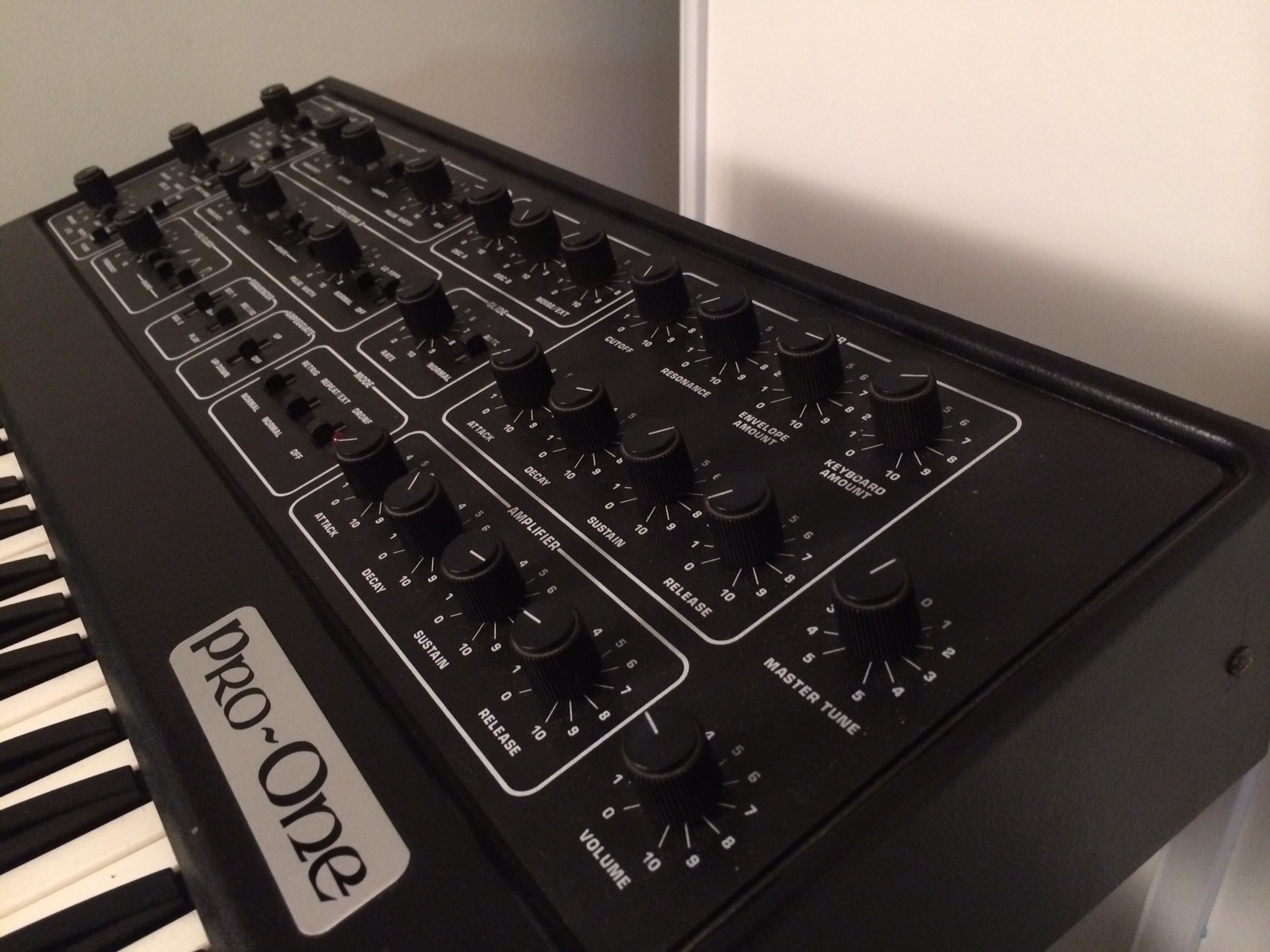
- #SEQUENTIAL CIRCUITS PRO ONE MONOPHONIC OR POLYPHONIC MANUAL#
- #SEQUENTIAL CIRCUITS PRO ONE MONOPHONIC OR POLYPHONIC PATCH#
- #SEQUENTIAL CIRCUITS PRO ONE MONOPHONIC OR POLYPHONIC PORTABLE#
The synthesizer's resources may still be in use to produce the sound of the previously struck notes tapering off, especially when a sustain pedal is used. Notes may continue to sound even after a key is released. Even with only ten fingers, it is possible to play more than ten notes at once.There are several reasons for providing such large numbers of simultaneous notes: 64-voice polyphony was common by the mid-1990s and 128-note polyphony arrived shortly after. With the advent of digital synthesizers, 16-voice polyphony became standard by the late 1980s. Six-voice polyphony was standard by the mid-1980s. Another notable polyphonic synth, the Yamaha CS-80 released in 1976, had eight-voice polyphony, as did the Yamaha GX-1 with total 18 voice polyphony, released in 1973. One notable early polyphonic synthesizer, the Prophet 5 released in 1978, had five-voice polyphony.
#SEQUENTIAL CIRCUITS PRO ONE MONOPHONIC OR POLYPHONIC PATCH#
One of the most popular polyphonic synth featuring patch memories, also used E-mu's technology. 1975) to control the multiple synthesizers. LEO used Armand Pascetta's polyphonic keyboard ( c. It was developed under the collaboration with E-mu Systems. In 1974, E-mu developed the polyphonic technologies, and in 1977, released the 4060 Polyphonic Keyboard and Sequencer.
#SEQUENTIAL CIRCUITS PRO ONE MONOPHONIC OR POLYPHONIC PORTABLE#
It was succeeded by the portable Yamaha CS-80 (1976), which was successful and became one of the most popular polyphonic analog synths.
#SEQUENTIAL CIRCUITS PRO ONE MONOPHONIC OR POLYPHONIC MANUAL#
Voice allocation technology was used to assign the limited 8-voices per manual into the notes. The Oberheim Polyphonic Synthesizer and Sequential Circuits Prophet-5 were both developed in collaboration with E-mu Systems. In the early-to-mid-1970s, the voice allocation technology with digital keyboard scanning was independently developed by several engineers and musical instrument manufacturers, including Yamaha, E-mu Systems, and Armand Pascetta (Electro Group). Patchable polyphonic synthesizer consists with three synths per key (totally 144 synthesizers), based on octave divider. Polyphonic ensemble keyboard consists with one synth per key (totally 60 synthesizers), based on octave divider Octave divider technology similar to Novachord was used. Ī forefather of octave divider synth and electronic organs. Polyphony is achieved so long as only one of each note in the scale is played simultaneously. To produce a note one octave lower, the frequency of the oscillator is divided by two. The additional notes are generated by dividing down the outputs of these oscillators. Using an octave divider a synthesizer needs only 12 oscillators - one for each note in the musical scale. It uses octave divider technology to generate polyphony, and about 1,000 Novachords were manufactured until 1942. Novachord by Hammond Organ Company, released in 1939, is a forefather product of frequency divider organs and polyphonic synthesizer. Harald Bode's Warbo Formant Orguel, developed in 1937, was an archetype of a voice allocation polyphonic synthesizer. The earliest polyphonic synthesizers were built in the late-1930s, but the concept did not become popular until the mid-1970s. Monophonic synthesizers with more than one oscillator (such as the ARP 2600) can often be patched to behave in a paraphonic manner, allowing for each oscillator to play an independent pitch which is then routed through a common VCF and VCA. For example, playing a new note on top of notes already held might retrigger the volume envelope for the entire sound. The result is a synthesizer that can play chords, provided all the notes start and end at the same time ( homophony).

Paraphonic synthesizers, such as the Solina String Ensemble or Korg Poly-800, were designed to play multiple pitches at the same time by using multiple oscillators, but with a common filter and/or amplifier circuit shared among all the voices. When only one key is pressed, both oscillators are assigned to one note, possibly with a more complex sound. When two or more keys are pressed simultaneously, the lowest- and highest-note will be heard. These synthesizers have at least two oscillators that are separately controllable, and a duophonic keyboard that can generate two control voltage signals for the lowest- and highest-note. Well-known monosynths include the Minimoog, the Roland TB-303, the Korg Prophecy, and the Korg Monologue.ĭuophonic synthesizers, such as the ARP Odyssey and Formanta Polivoks built in the 1970s and 1980s respectively, have a capability to independently play two pitches at a time. This does not necessarily refer to a synthesizer with a single oscillator the Minimoog, for example, has three oscillators which are settable in arbitrary intervals, but it can play only one note at a time. See also: Synthesizer Monophonic Ī monophonic synthesizer or monosynth is a synthesizer that produces only one note at a time, making it smaller and cheaper than a polyphonic synthesizer which can play multiple notes at once.


 0 kommentar(er)
0 kommentar(er)
